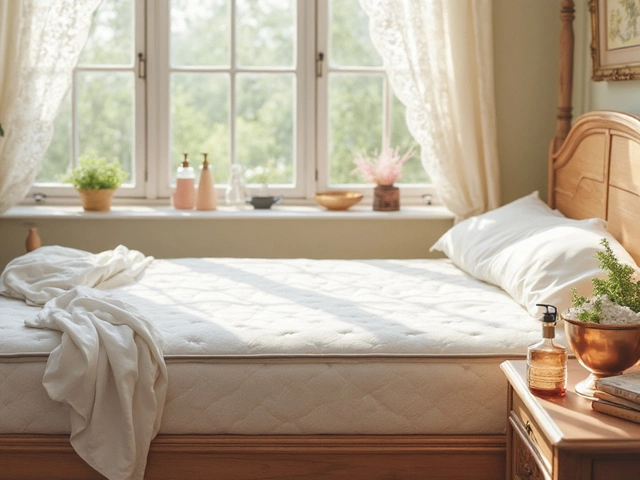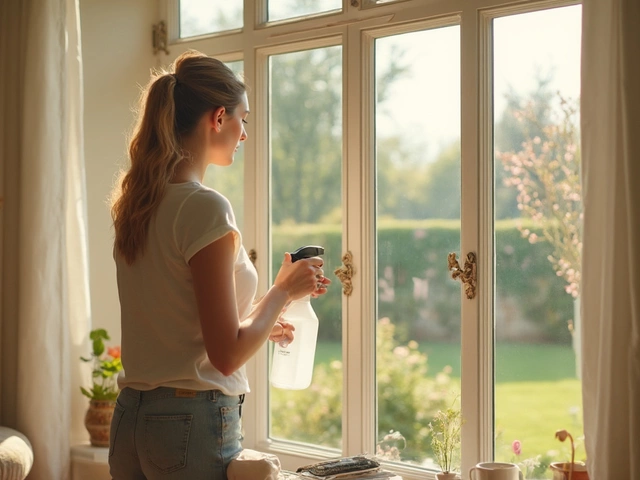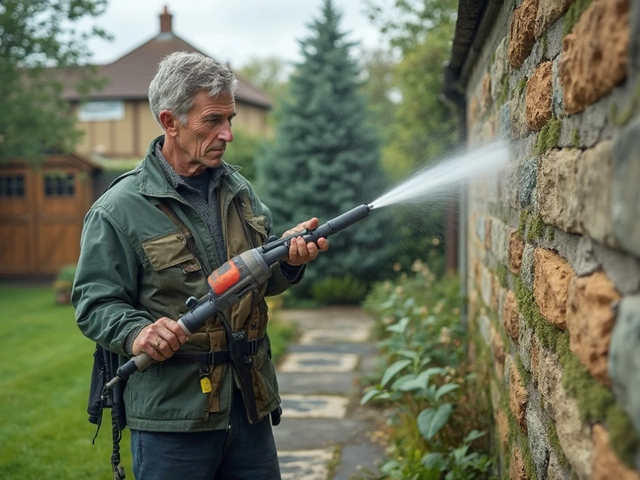Oven Cleaner Recipe Selector
Find Your Perfect Oven Cleaner
Select your cleaning scenario to get a personalized recommendation.
Your Recommended Cleaner
Note: Always test a small area first and follow safety guidelines. Avoid applying directly to heating elements.
Key Takeaways
- Mixing baking soda with water creates a gentle yet powerful paste that lifts baked‑on grime.
- White vinegar or hydrogen peroxide adds fizz or bleaching power, shortening cleaning time.
- Lemon juice and castile soap give a pleasant scent and cut through oil.
- All recipes cost under £2, use pantry staples, and are safe for most oven finishes.
- Follow safety steps - ventilate, wear gloves, and avoid excess moisture on electrical components.
When you hear homemade oven cleaner is a DIY mix of everyday household items designed to break down baked‑on grease without harsh chemicals, you probably wonder if it can truly match store‑bought formulas. The answer is yes -provided you choose the right ingredients and give them enough time to work.
Why DIY beats harsh chemicals
Commercial oven sprays often contain ammonia, phosphates, or petroleum‑based solvents. These can irritate lungs, damage oven seals, and leave lingering odors. A homemade oven cleaner relies on mild acids, alkalies, and surfactants that are food‑safe, biodegradable, and cheap. Plus, you control the concentration, so there’s less risk of corroding the enamel.
Core ingredients and how they work
Each ingredient brings a specific chemistry:
- Baking soda (sodium bicarbonate) is a mild alkaline that softens grease, making it easier to scrub.
- White vinegar (5% acetic acid) reacts with baking soda to create carbon dioxide bubbles that lift grime.
- Hydrogen peroxide (3% solution) adds a gentle oxidizing action, breaking down stubborn stains.
- Lemon juice (natural citric acid) supplies acidity and a fresh scent.
- Castile soap (vegetable‑based surfactant) reduces surface tension, helping the solution spread evenly.
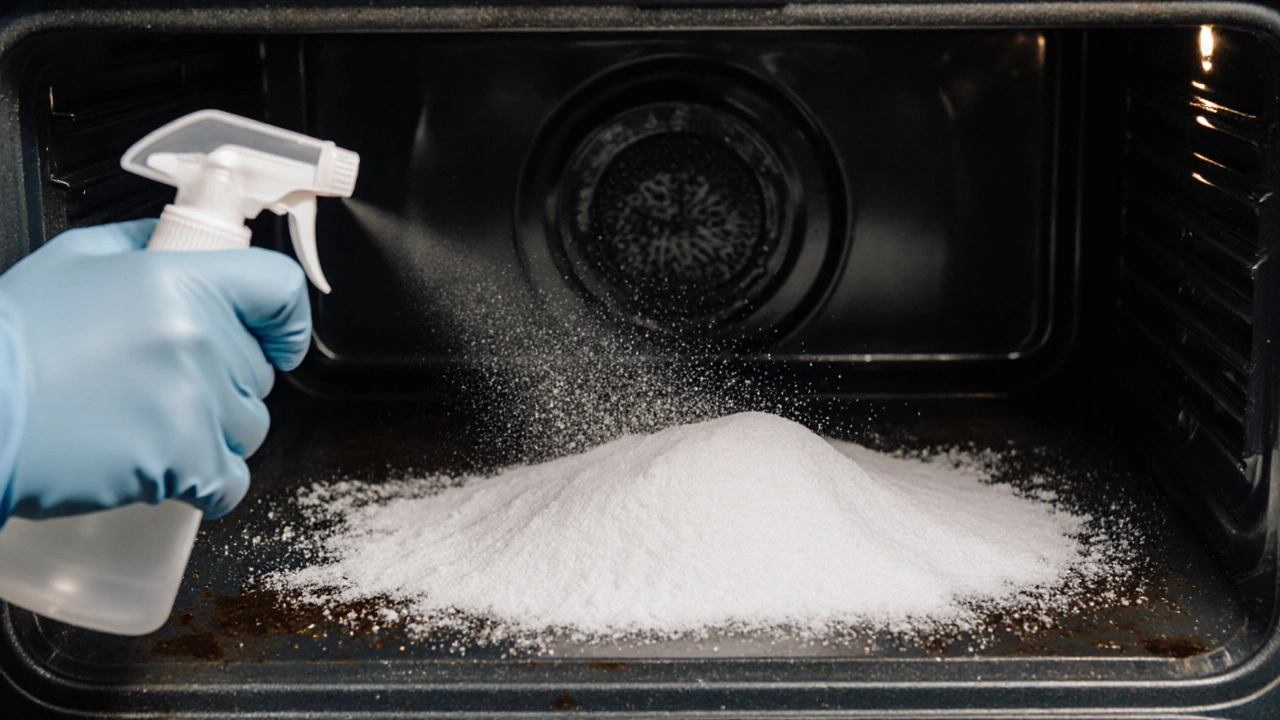
Top 5 proven homemade recipes
Below are the most reliable mixes, tested on gas and electric ovens in the UK. Choose one based on the time you have and the level of grime.
1. Classic Baking‑Soda Paste
- Mix ½ cup baking soda with enough warm water to form a thick paste (about 3‑4Tbsp water).
- Spread the paste over the interior, avoiding heating elements.
- Leave it overnight (or at least 8hours) to let the alkali soften the residue.
- Wipe with a damp cloth, then rinse with a little white vinegar to neutralize any leftover soda.
2. Fizzy Vinegar‑Baking Soda Boost
- Sprinkle a generous layer of baking soda on the oven floor.
- In a spray bottle, combine equal parts white vinegar and water. Spray over the soda; it will fizz.
- Let it sit for 30minutes, then scrub with a non‑abrasive sponge.
- Rinse with warm water and wipe dry.
3. Hydrogen Peroxide Power Scrub
- Combine ¼ cup hydrogen peroxide with 2Tbsp baking soda to form a fizzing paste.
- Apply to burnt spots and let bubble for 10minutes.
- Scrub gently with a soft brush; the peroxide will lift carbonized food.
- Wipe clean with a damp cloth.
4. Lemon‑Castile Fresh Clean
- Mix ¼ cup lemon juice, ½ cup castile soap, and 1cup warm water.
- Transfer to a spray bottle and mist the oven interior.
- Allow 15minutes; the citric acid cuts oil while the soap lifts it.
- Wipe with a clean microfiber cloth; no rinsing needed.
5. Dual‑Action Cornstarch‑Vinegar Gel
- Blend 2Tbsp cornstarch, ¼ cup water, and ¼ cup white vinegar until smooth.
- Heat the mixture in the microwave for 30seconds to thicken into a gel.
- Spread the gel on greasy spots; it hardens, trapping grime.
- After 20minutes, peel off the gel and wipe the residue with a damp sponge.
Recipe comparison table
| Recipe | Main active | Strength | Time to work | Cost (≈£) | Safety rating |
|---|---|---|---|---|---|
| Classic Baking‑Soda Paste | Baking soda | Medium | 8‑12hrs | 0.30 | High |
| Fizzy Vinegar‑Baking Soda | Vinegar + baking soda | High | 30‑45min | 0.45 | High |
| Hydrogen Peroxide Power | Hydrogen peroxide | High | 10‑15min | 0.60 | Medium |
| Lemon‑Castile Fresh | Lemon juice | Medium | 15‑20min | 0.70 | High |
| Cornstarch‑Vinegar Gel | Cornstarch + vinegar | Medium‑High | 20‑25min | 0.55 | High |
How to pick the right recipe for your oven
Consider three factors:
- Grade of grime: Light oil splatters respond well to lemon‑castile; baked‑on carbon needs the alkaline power of baking soda or peroxide.
- Time you can spare: If you’re in a rush, the fizzy vinegar‑baking‑soda combo gives quick results. For weekend deep‑cleaning, the overnight paste is ideal.
- Material safety: Self‑cleaning ovens have a porous enamel that can be damaged by excessive acid. Stick to baking soda‑based mixes for those models.
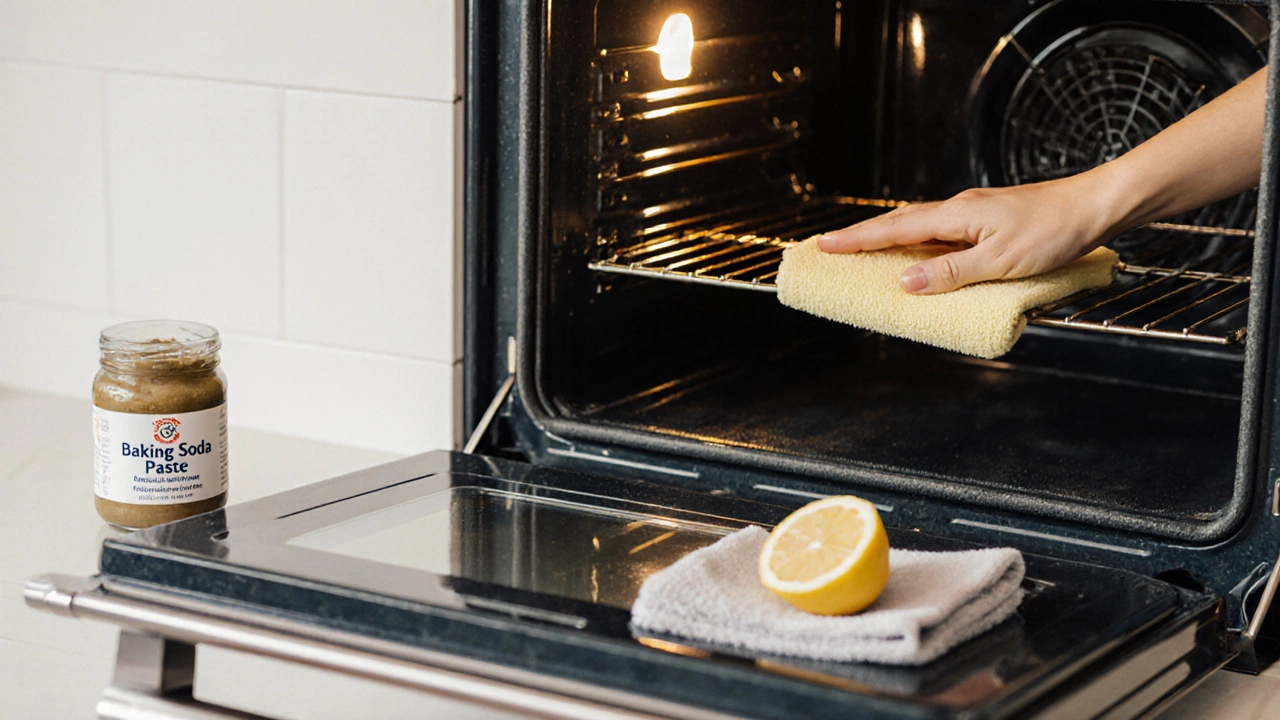
Safety tips and common pitfalls
Even natural ingredients can cause trouble if misused.
- Ventilate the kitchen - open windows or run the extractor fan. Vinegar fumes can irritate eyes.
- Wear rubber gloves to protect skin from prolonged alkaline contact.
- Never spray liquids directly onto heating elements or the oven’s electrical connections.
- Avoid over‑watering. Too much moisture can seep into insulation and cause rust.
- Test a small hidden spot first, especially on painted or stainless‑steel interiors.
Keeping your oven tidy between deep cleans
Prevent buildup with a simple routine:
- After each use, let the oven cool, then wipe the interior with a damp cloth dipped in a few drops of white vinegar mixed with water.
- Place a sheet of foil or a silicone mat on the bottom rack to catch drips.
- Run a quick 10‑minute “warm‑up” at 150°C weekly; the heat loosens thin films, making them easier to wipe away.
- Spot‑clean stubborn spots with a half‑strength baking‑soda paste as soon as they appear.
Frequently Asked Questions
Can I use the same cleaner for a microwave?
Yes, most of the recipes (especially the lemon‑castile mix) are safe for microwave interiors. Just avoid using excessive liquid near the waveguide cover.
Do these cleaners damage enamel‑coated ovens?
When used as directed, they are gentle enough for enamel. The key is to rinse thoroughly and not let acidic solutions sit for more than the recommended time.
How long can I store a homemade cleaner?
A sealed jar of baking‑soda paste lasts about two weeks in the fridge. Vinegar‑based sprays stay good for six months if kept away from direct sunlight.
Is it okay to mix bleach with any of these recipes?
No. Bleach reacts violently with acids like vinegar and can release toxic chlorine gas. Stick to the natural ingredients listed above.
What if the smell of vinegar lingers?
Run the oven on a low heat (90‑100°C) for 15minutes with a bowl of water inside. The steam helps neutralize the scent.
Next steps
Pick the recipe that matches your schedule, gather the pantry staples, and set a timer. If you hit a stubborn spot, combine two methods - for example, start with the baking‑soda paste overnight, then finish with a quick vinegar spray for extra fizz. With a bit of patience, you’ll have a sparkling oven without spending a fortune or inhaling chemicals.
